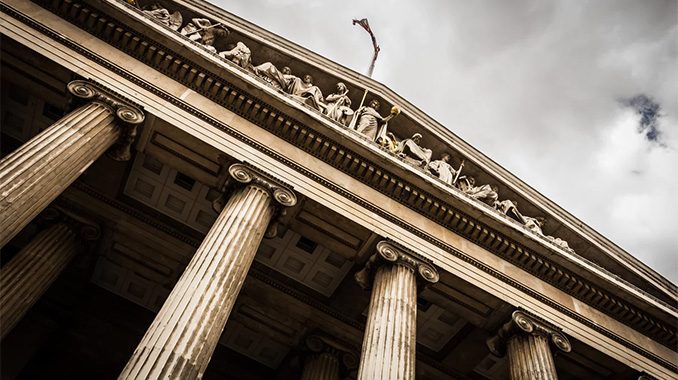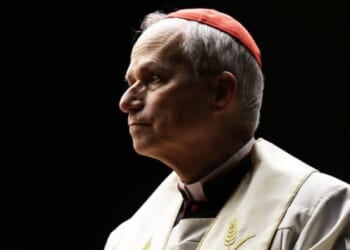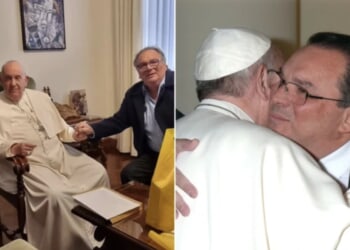
On May 22, 2025, the Supreme Court issued a succinct, one-sentence order ending the litigation over whether Oklahoma could fund St. Isidore of Seville as the nation’s first virtual faith-based charter school under the direction of the Roman Catholic Archdiocese of Oklahoma City and the Diocese of Tulsa.
The Justices simply announced that “[t]he judgment [of the Supreme Court of Oklahoma] is affirmed by an equally divided Court.”
The outcome involving St. Isidore is something of a surprise because, during oral arguments on April 30th, it appeared that a narrow Supreme Court majority would decide in favor of allowing the school to operate. The Court was deadlocked at four because, in an unanticipated twist, only eight of its members participated in oral arguments as Justice Barrett recused herself.
Although Barrett did not offer a reason for recusing herself, she apparently did so due to her friendships with former faculty colleagues at Notre Dame, who helped in St. Isidore’s defense.
In light of the outcome over St. Isidore, this column first briefly retraces the history of this dispute. The article then reflects on how this result might impact parental choice and religious freedom in education and whether it is a bump in the road or the end of aid to parents who wish to send their children to faith-based schools.
Charter schools
The charter school movement began in earnest in the United States in 1991 when Minnesota adopted legislation creating the first publicly funded schools of choice, affording parents greater options for educating their children.
Presently, laws in forty-five states and the District of Columbia permit charter schools.
Charter schools differ significantly from other public schools. While free from many state laws and regulations concerning staff and curricula, charter schools remain subject to federal and local antidiscrimination laws, such as those dealing with students with disabilities and employment. In return, charter school officials are accountable for the academic achievement of their students.
Charters vary in duration, typically ranging from three to five years, at which time they can be renewed or terminated based on whether they met their stated goals. Until Oklahoma attempted to create St. Isidore, charter schools had to, and still must, be nonsectarian institutions or can be closed for violating the First Amendment’s Establishment Clause.
St. Isidore
In the face of opposition led by state Attorney General Gentner Drummond, who filed suit challenging its existence, on its second attempt, Oklahoma’s five-member Statewide Virtual Charter School Board approved the creation of St. Isidore, named after the patron saint of the internet, in a three-to-two vote on June 5, 2023.
On June 25, 2024, in Drummond v. Oklahoma Statewide Virtual Charter School Board, Oklahoma’s Supreme Court, relying largely, but not exclusively, on state grounds, invalidated efforts to open St. Isidore for the 2024-2025 academic year.
With one member recusing himself, in a six-to-two order, depending on how one counts the two-sentence opinion of the justice who “concur[ed] with the Majority that Article 1, [§] 5 of the Oklahoma Constitution mandates that public charter schools are nonsectarian” but “dissent[ed] to the remainder of the Majority’s opinion,” the court invalidated St. Isidore’s founding.
The court concluded that because state law requires charter schools to be nonsectarian, “[t]he St. Isidore Contract violates state and federal law and is unconstitutional.”
As indicated, the Supreme Court agreed to intervene, affirming in favor of Drummond.
Reflections
It appeared from oral arguments that the Supreme Court would allow St. Isidore to open, continuing its expansion of the limits of aid to students and parents who wish to enroll their children in faith-based schools. Without written opinions, though, there is no rationale explaining how the Justices resolved the case.
The outcome in St. Isidore is surprising because, starting in 2016, in a trilogy of opinions written by Justice Roberts, the Supreme Court expanded the limits of aid. After emphasizing that officials in Missouri could not prevent a Lutheran preschool from participating in a program to improve playground safety solely because it was religious, three years later, the Court held that Montana could not exclude parents from taking part in its educational tax credit program to send their children to Christian schools. Then, in 2021, the Court found that Maine could not deny parents who lived in districts lacking public secondary schools the opportunity to rely on its tuition assistance law to send their young to faith-based schools.
During oral arguments, the Justices remained true to form as Thomas, Alito, Gorsuch, and Kavanaugh seemingly continued to favor aid. On the other hand, Justices Kagan, Sotomayor, Jackson— who have refused to permit assistance to faith-based schools—opposed allowing St. Isidore to operate. Interestingly, Chief Justice Roberts, author of the Court’s three recent opinions permitting aid, commented that St. Isidore’s creation seems like “much more comprehensive [state] involvement” raising speculation over his vote.
However, because the Justices issued an unsigned per curiam, or “for the Court” judgment, there is no way of knowing how they voted.
Four unanswered questions highlight why the result in St. Isidore is perplexing.
First, it is surprising, even disappointing, that neither Justice Thomas nor Justice Alito,, strong supporters of religious freedom in education, authored dissents to explain why the Court ruled as it did, leaving this as an open question.
Second, it is uncertain what impact Justice Barrett’s absence may have had on the Court’s deliberations.
Third, equally unclear is whether the Court is cutting back on its recent advances in allowing assistance or if it views the funding of an entire school, albeit virtual, as exceeding the limits of aid.
A fourth unresolved inquiry is whether the Supreme Court’s affirming that St. Isidore could not operate is a blessing or a threat to Catholic and other faith-based schools.
This is crucial because, on the one hand, Oklahoma would have apparently allowed St. Isidore officials to operate free from state oversight on matters such as curriculum, as well as whether teachers and other staff complied with Church teachings on such key matters as human sexuality. On the other hand, keeping in mind the anachronism that “control follows the dollar,” litigation continues in states such as California and Colorado, where public officials have unsuccessfully attempted to discriminate against faith-based schools.
As such, perhaps it is better to wait to see how the courts respond when challenges arise to options supporters devise as alternatives to what Oklahoma attempted. Patience may be the best approach in evaluating the Court’s judgment here because even as Catholic schools, in particular, face financial crises and declining enrollments, they, and other faith-based schools, remain free from state interference to operate in a manner consistent with their religious values.
However, on a more hopeful note, to date, at least 17 states have enacted school choice laws offering vouchers, education savings accounts, and tax credits. Moreover, supporters of educational choice introduced a bill promoting vouchers for non-public schools in the United States House of Representatives.
The outcome in St. Isidore is unlikely to be the last word on aid to parents who wish to send their children to a Catholic or other faith-based schools, and so this will continue to be an important issue to follow.
If you value the news and views Catholic World Report provides, please consider donating to support our efforts. Your contribution will help us continue to make CWR available to all readers worldwide for free, without a subscription. Thank you for your generosity!
Click here for more information on donating to CWR. Click here to sign up for our newsletter.









